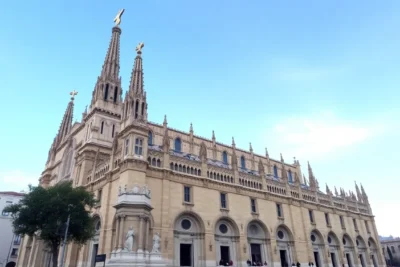
The Sagrada Familia, an iconic basilica designed by the visionary architect Antoni Gaudí, stands as a testament to Barcelona's rich cultural heritage. Its intricate facades and towering spires draw millions of visitors each year, making it one of the most recognizable landmarks in the world.
To truly appreciate the blend of art and architecture that defines this masterpiece, you must **Visit the Famous Sagrada Familia in Barcelona**. Every corner of this extraordinary structure tells a story, inviting you to explore its beauty and the genius behind its creation.
Explore the Architectural Wonders of Sagrada Familia in Barcelona
The Sagrada Familia is not just a church; it's a monumental achievement in architectural innovation. Gaudí’s use of natural forms and his integration of light and space creates a harmonious experience as you walk through its halls. The basilica features a unique combination of Gothic and Art Nouveau styles, making it a true reflection of the modernista movement in Spain.
As you explore, you'll notice the stunning details that characterize the Sagrada Familia. Some highlights include:
- The Nativity Facade: Celebrating the birth of Christ with intricate carvings and vibrant sculptures.
- The Passion Facade: A stark contrast, showcasing the suffering of Christ through bold lines and dramatic figures.
- Interior Columns: Designed to resemble trees, these columns create an enchanting forest-like atmosphere.
Additionally, the basilica is renowned for its towering spires, each representing a different biblical figure. Upon completion, the Sagrada Familia will have a total of 18 spires, symbolizing the twelve apostles, the Virgin Mary, the four evangelists, and Jesus Christ. This ambitious design not only enhances its silhouette against the Barcelona skyline but also serves as a reminder of the spiritual message that the basilica conveys.
Visiting the Sagrada Familia offers a unique opportunity to witness the ongoing construction, which has been funded entirely by private donations. This dedication to completion reflects the community's commitment to preserving Gaudí's legacy, ensuring that future generations can appreciate the architectural wonders of this extraordinary site. Make sure to take your time to soak in the details, as each visit reveals new facets of this architectural marvel.
Discover the History and Significance of Sagrada Familia
The Sagrada Familia's history is deeply intertwined with the life of Antoni Gaudí, who began working on the project in 1883. Initially designed as a traditional church, Gaudí transformed it into a visionary masterpiece, drawing inspiration from nature and his religious beliefs. His innovative approach not only changed the concept of sacred architecture but also set a new standard for modernism in art and design.
As the basilica progresses towards completion, its significance continues to grow. The Sagrada Familia has become a symbol of Barcelona's identity and a prominent representation of the city's artistic heritage. This ambitious project is expected to be completed by 2026, marking the centenary of Gaudí's death, and will stand as a lasting tribute to his legacy.
Visitors can gain insight into the basilica's meaning through various elements, including:
- Religious Symbolism: Each facade and tower conveys a specific biblical story, enriching visitors' understanding of its spiritual significance.
- Architectural Collaboration: Over the years, countless architects and artisans have contributed to the project, reflecting a collaborative effort to honor Gaudí's vision.
- Community Involvement: The construction is funded by donations, showcasing the collective passion of the people for this landmark.
In addition to its architectural and historical importance, the Sagrada Familia serves as a cultural hub. It hosts numerous events, exhibitions, and educational programs that allow visitors to engage with Gaudí's work on a deeper level. This commitment to education and appreciation of art ensures that the Sagrada Familia remains a vital part of Barcelona's cultural landscape for generations to come.
Top Tips for Visiting the Iconic Sagrada Familia
When planning your visit to the Sagrada Familia, consider buying your tickets online in advance. This will not only save you time in long queues but also ensure you secure a spot for your preferred time slot. Additionally, you might want to choose a guided tour for a deeper understanding of Gaudí's vision and the basilica's intricate details.
Another tip is to visit during off-peak hours. Early mornings or late afternoons tend to be less crowded, allowing you to enjoy the beauty of the Sagrada Familia in a more tranquil setting. Be mindful of the time you spend inside, as each area offers unique perspectives and experiences that can enhance your visit.
Don’t forget to check the weather before your visit. The Sagrada Familia is beautiful year-round, but sunny days are especially lovely for capturing photos of its stunning facades. Here are some essentials to bring along:
- Camera: To capture the breathtaking architecture.
- Water bottle: Stay hydrated, especially during summer.
- Comfortable shoes: Be prepared for a lot of walking.
- Guidebook or app: For more in-depth information about the basilica.
Lastly, take the time to explore the surrounding area of the Sagrada Familia. The neighborhood offers a variety of cafes, shops, and parks that can enrich your experience. Engaging with local culture adds another layer to your visit, making it a truly memorable experience in Barcelona.
A Guide to the Stunning Facades of Sagrada Familia
The facades of the Sagrada Familia are not only architectural marvels but also rich narratives that depict key moments from the life of Christ. Each facade serves a specific purpose and conveys profound religious messages through its design. Among these, the Nativity Facade celebrates the birth of Jesus with intricate details and playful sculptures that invite admiration and contemplation.
In stark contrast, the Passion Facade presents a more somber and dramatic interpretation of Christ's suffering. Its angular forms and striking figures evoke a sense of grief and sacrifice, making it a powerful reflection of the darker moments in the Christian narrative. As visitors explore these facades, they will find that each element is meticulously crafted to enhance the overall storytelling of the basilica.
Equally fascinating is the Glory Facade, which is currently under construction and aims to symbolize the glory of Jesus and the promise of redemption. Once completed, it will serve as the main entrance to the Sagrada Familia, drawing visitors into a space that encapsulates the essence of Gaudí's vision. The interplay of light and shadow across these facades further emphasizes their unique characteristics, making every visit a new experience.
To fully appreciate the artistry behind the Sagrada Familia's facades, consider these highlights:
- Symbolism: Each detail carries a deeper meaning, from the sculptures to the architectural choices.
- Artistic Influence: Gaudí’s influences from nature can be seen in the organic forms and structures.
- Visitor Experience: Engaging with the facades provides insight into the spiritual and cultural significance of the basilica.
Understanding the Symbolism Behind Sagrada Familia's Design
The design of the Sagrada Familia is steeped in symbolism, reflecting Antoni Gaudí's deep religious convictions and his profound appreciation for nature. Every aspect of the basilica, from its towering spires to the intricate facades, conveys spiritual messages that invite contemplation. For instance, the three main facades—Nativity, Passion, and Glory—each illustrate a pivotal phase of Christ's life, enabling visitors to engage with the biblical narrative through architectural artistry.
Gaudí's incorporation of natural forms into the structure is particularly noteworthy. The columns within the basilica mimic trees, branching out to support the ceiling like a forest canopy. This design not only enhances the aesthetic appeal but also symbolizes the connection between nature and divinity, reflecting Gaudí's belief that creation itself is a manifestation of God. Additionally, the play of light within the interior is carefully orchestrated to evoke spiritual transcendence, illuminating the space and fostering a sense of peace and reverence.
Furthermore, the use of geometry in the Sagrada Familia is intentional and significant. The geometry found in the structure—whether it be in the shapes of the facades or the layout of the spires—demonstrates a divine order, suggesting that the universe operates under a higher power. This meticulous attention to mathematical precision not only enhances the basilica's beauty but also serves as a reminder of the spiritual truths that underpin its design. Each element invites reflection, making the Sagrada Familia a living testament to Gaudí's artistic vision and spiritual devotion.
Lastly, the ongoing construction of the Sagrada Familia embodies the collective faith and commitment of the community. Funded entirely through donations, this ambitious project symbolizes a shared aspiration to realize Gaudí's vision. As each new stone is laid, it reinforces the idea that the Sagrada Familia is not merely a building, but a dynamic work of art that continues to inspire and unite people in their pursuit of beauty and spirituality. This enduring legacy will ensure that future generations can appreciate the profound messages embedded within its walls.
Best Times to Visit Sagrada Familia for an Unforgettable Experience
Choosing the best time to visit the Sagrada Familia can significantly enhance your experience. For those looking to avoid crowds, consider visiting during the early morning or late afternoon. These times not only provide a quieter atmosphere but also allow you to bask in the stunning light that filters through the basilica’s intricate stained glass, creating a magical ambiance.
Another excellent option is to plan your visit during the off-peak seasons, such as late winter or early spring. During these months, you are likely to encounter fewer tourists, making your exploration of Gaudí's masterpiece even more intimate. Additionally, the weather is generally mild, perfect for strolling around the surrounding area.
To help you decide the best time for your visit, here’s a quick comparison of peak versus off-peak times:
| Aspect | Peak Season | Off-Peak Season |
|---|---|---|
| Crowd Levels | High | Low |
| Weather | Hot and often humid | Mild and pleasant |
| Price of Tickets | Higher | Lower |
| Experience Quality | Less immersive | More intimate |
Ultimately, visiting during the late afternoon hours not only allows you to enjoy a less crowded experience but also provides an opportunity to witness stunning sunsets behind the basilica, making it an unforgettable experience. Whether you choose a bustling summer day or a quiet winter morning, the Sagrada Familia will leave you in awe of its beauty and architectural grandeur.
 Cost to Build Casa Batlló in Barcelona Not Available
Cost to Build Casa Batlló in Barcelona Not Available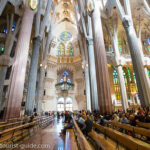 Visiting Hours for Sagrada Familia
Visiting Hours for Sagrada Familia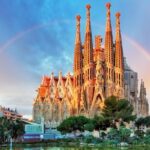 Discover the Wonders of Sagrada Familia: Barcelona Tickets 2022
Discover the Wonders of Sagrada Familia: Barcelona Tickets 2022If you want to know other articles similar to Visit the Famous Sagrada Familia in Barcelona you can visit the category Sagrada Familia.
Leave a Reply

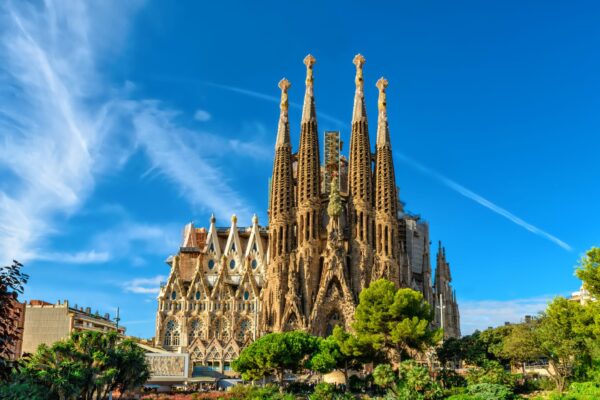
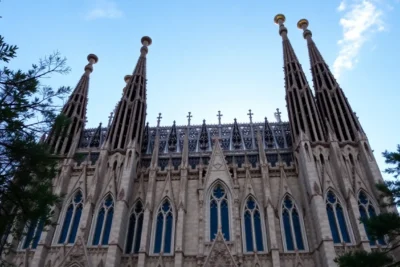
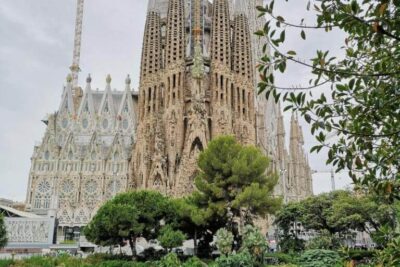
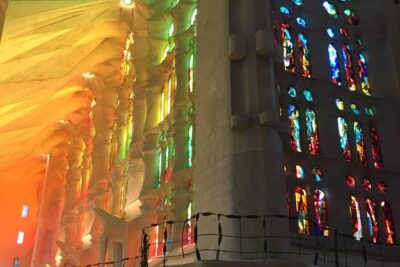
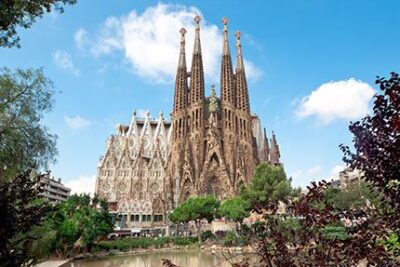
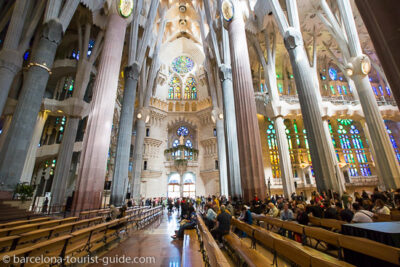
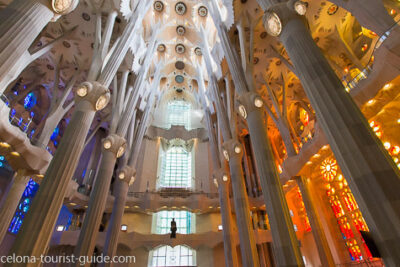
Read more!